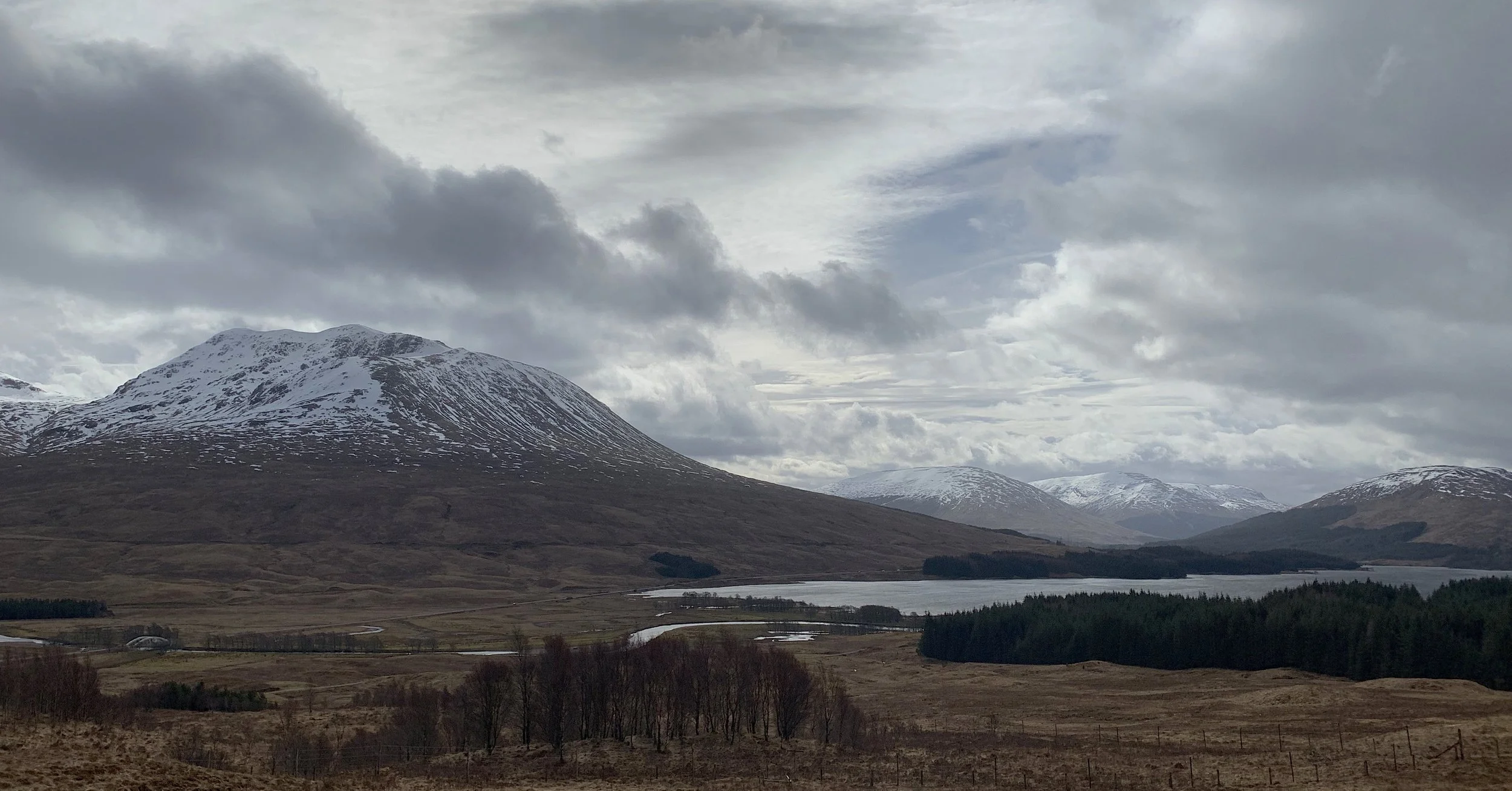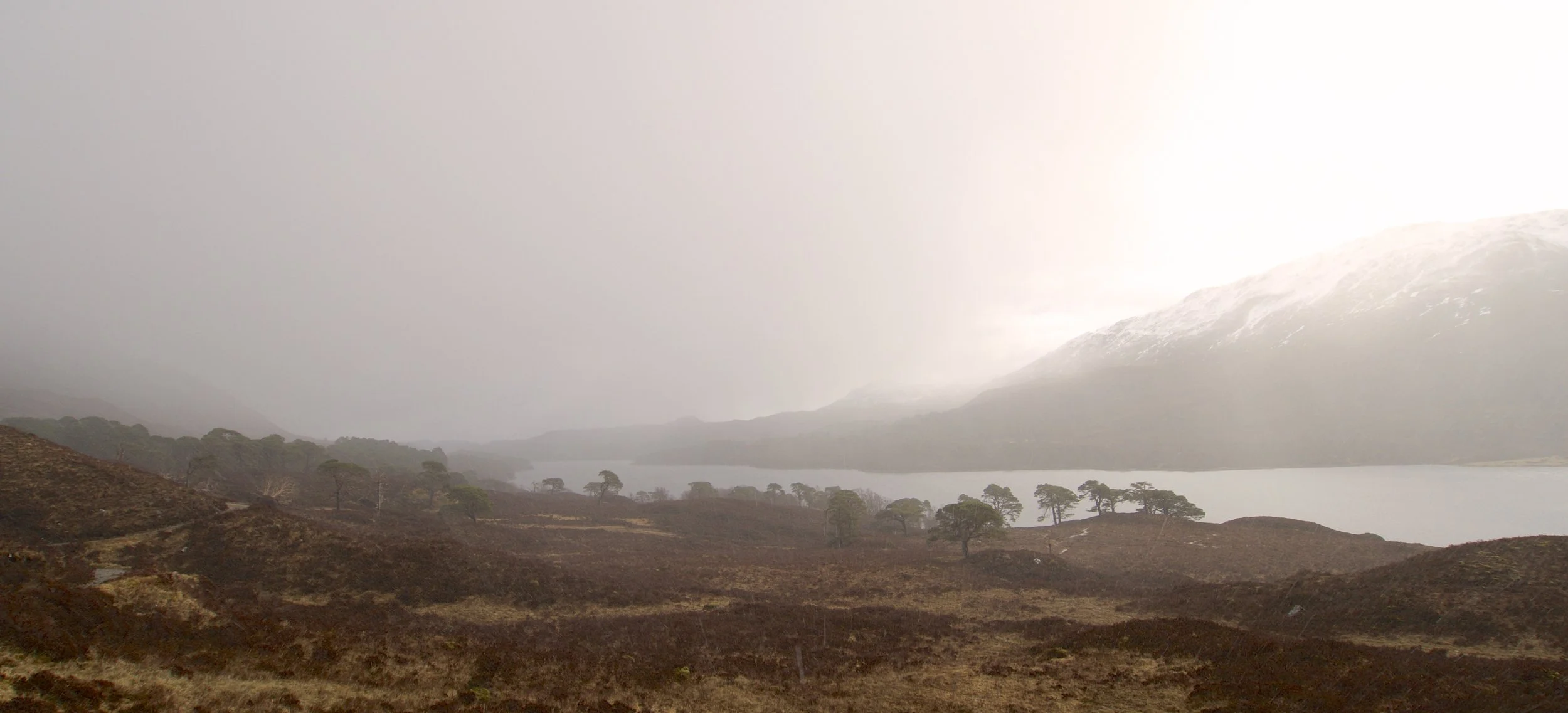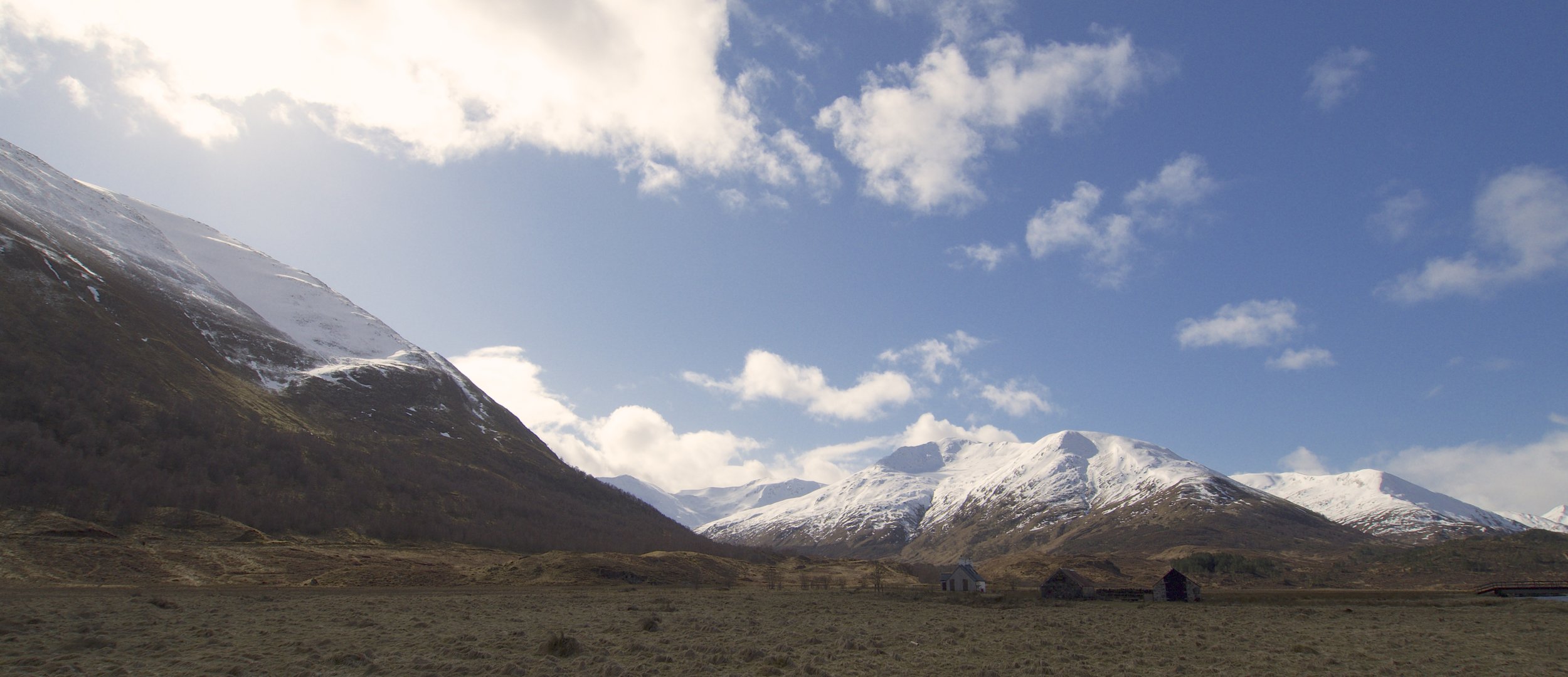Looping the Glen.
Full circle. We’ve come full circle. Trekking has been my family’s only past time: it’s understandable if, like homing pigeons, we felt its call, the urge to get up and go, shoulder the pack and get out early, when it’s still chilly and no one’s about.
It could be earlier, I lament to myself. There are some cars already in the parking lot and the sun is already above the ridge lines, painting the flanks of the hills gold. Back then we’d have said that we were late.
A trail loops the Glen Affric, starting with an inviting slope leading to the water’s edge. Light flows between the trees, still nude at this tail end of winter. Walking between them we can glimpse the loch, the glacial valley around it, the ancient mountains that surround it from all sides. We walk rapidly, soles scraping the gravel of the path, water rumbling in the background and fronds rustling in the wind.
The path is large and dry and we’re happy about it. Our shoes, trousers and gear are still caked in the mud of yesterday’s trail. Rain, sleet and the thawing snow turned Meall Fuar-mhonaidh into 1917 Somme.
Not today, not here. We talk intermittently, hands sunk in pockets and faces behind zipped-up jackets. We chat as we walk down the path at a brisk pace, waiting for the sun to shine like he means it, and for our bodies to build up the required heat.
The Glen Affric trail is long but not steep, an 18-km loop coasting the lochs, rising and falling with the whims of orography, weaving in and out of thickets of ancient scot pines, past rust-red ferns and venerably old mountains eroded by eons of wind. It’s what we wanted: long, quiet, isolated and as different from London as it can be without leaving the country (back then, in early March, travel was still possible but getting sketchier by the day).
A battle – or, rather, a series of skirmishes, of ambushes – was fought here in 1721, firefights in these woods between the Ross clan and the joined forces of the MacKenzie and MacRae. It’s the wobbly lid of the Pandora’s box that is Scottish history with its endless chain of rebellions, domestic strife and blood feuds too nebulous to navigate without a detailed flow chart. XVIII century Scotland wasn’t that far from today’s Middle East.
A handsome lodge sits pretty on a rocky promontory abutting the loch. Nothing flashy, just solid, florid, well-built and impeccably kept; the kind of place where I dream to weather this quarantine, writing my memoirs whilst the venison stew slow cooks in the kitchen and the dogs snooze in warm pools of light coming from the south-facing windows.
Dream on, I tell myself as I walk past, coasting the fences that protect fragile woods from over-enthusiastic deer and sheep. Woody Guthrie might’ve sang “This land’s your land” but what’s true for the redwood forests to the Gulf stream ain’t valid for Scotland.
No one knows exactly who owns what in Scotland. Holyrood launched, in 2014, a 10-year-project to map land ownership in the nation but, halfway through the lifetime of the initiative, barely a third of the country’s ownership map has been completed. Still, there’s enough evidence to suggest that my lodge-ownership dreams are destined to stay in a drawer for the foreseeable future. There’s Green MSP Andy Wightman’s estimates, according to which half of Scotland’s rural land is owned by less than 450 people. There’s the fact that 87 families possess a chunk of the country bigger than Kuwait. And that less than 3% of Scotland is community owned.
Glen Affric is not different. Over the years it passed hands between people with kilometric pedigrees: from Dudley Marjoribanks – a.k.a. Lord Tweedmouth – to the 6th Earl of Portsmouth to Viscount Marmaduke Furness. Today the lodge belongs to one David Williams, whose son James happens to be married to Pippa Middleton, Prince William’s sister-in-law.
At times it feels as if the views were Jurassic. As if, from behind the canopy of these ageless pines, the head of a brontosaurus could emerge, chewing on a branch. It’s just for a second, enough for a bank of clouds to roll in, trailing wind and rain in their wake. Then you’re in an endless bog.
Traipsing in a bog is a miserable experience. Traipsing in a bog whilst being lashed by cold rain face-on is even worse. Eventually, mercifully, the clouds crab-walked away and the views returned to be, to borrow from our American friends, aww-some.
Strawberry cottage had the name the cannibalistic witch would’ve given to the marzipan house where she lured Hansel and Gretel. The reality is simpler, more rugged, void of human presence. A trail uncoiled in the distance. Another descended from the snowy flank of Beinn Fadha.
The wind picks up as we round the loch, alone and snacking on the dried fruit we’ve taken with us. A hut sits near the water edge and a herd of deer follow their stag up the woods, away from us. In that moment I felt the same sense of satisfaction, of content isolation, that filled me up on the Altiplano, where Argentina, Chile and Bolivia all rushed to meet each other in an embrace that no one but us was there to witness. Atahualpa Yupanqui began singing in my mind.
The road climbs on, through the woods and back out in the open. We smile and carry on.



